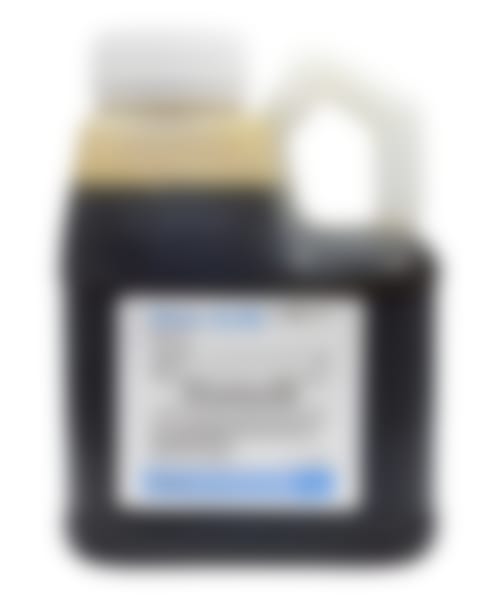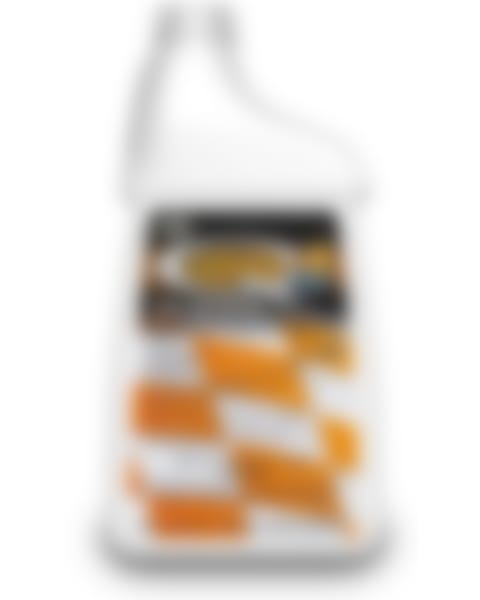
Crabgrass Control
Crabgrass is an annual grass weed that comes up each spring from seed. It germinates in late winter or early spring (depending on your location). By the time it's noticeable, you'll see short light green grasses along walkways or thin areas on your lawns' surface where this pesky weed has taken hold. Crabgrass has fast-growing habits coupled with a shallow root system and quickly spreads out and chokes out other vegetation.
Crabgrass can produce thousands of seeds before you know it.
If you are inspecting for Crabgrass, often it will first be noticeable along walkways and driveways where the concrete or asphalt absorbs heat from sunlight.
Characteristics
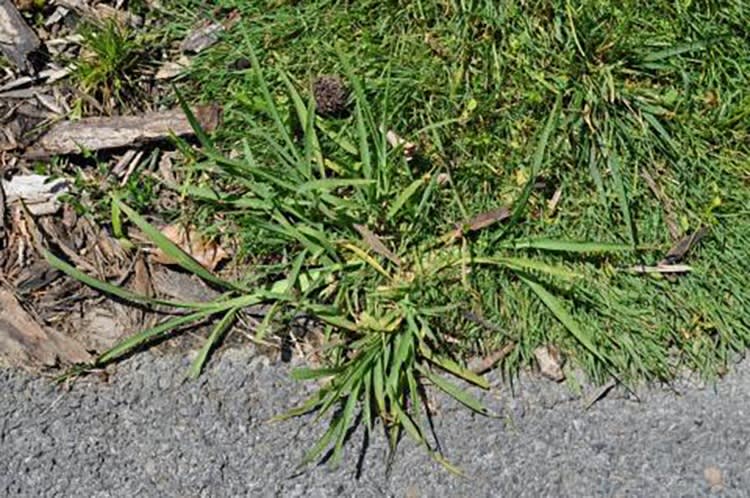

-
Wide leaf blades
-
Blades go outwards from stem in a starlike fashion and fall to the ground
-
Likes to grow in bare spots that have high visibility to sunlight
-
Germination starts when soil temperature is around 50-60 degrees
-
Seed heads finger out from the stem
3-7 seed heads
Smooth Crabgrass (Scientific Name - Digitaria ischaemum )
Smooth crabgrass is a pesky, spreading annual summer weed that has smooth surfaces on both sides of its leaf. There are a few long hairs at the collar and a visible membranous segment at the base of the leaf blade. It has a seed head with two to six "finger-like" branches. It reproduces by seed. It's found throughout the United States and in Europe.
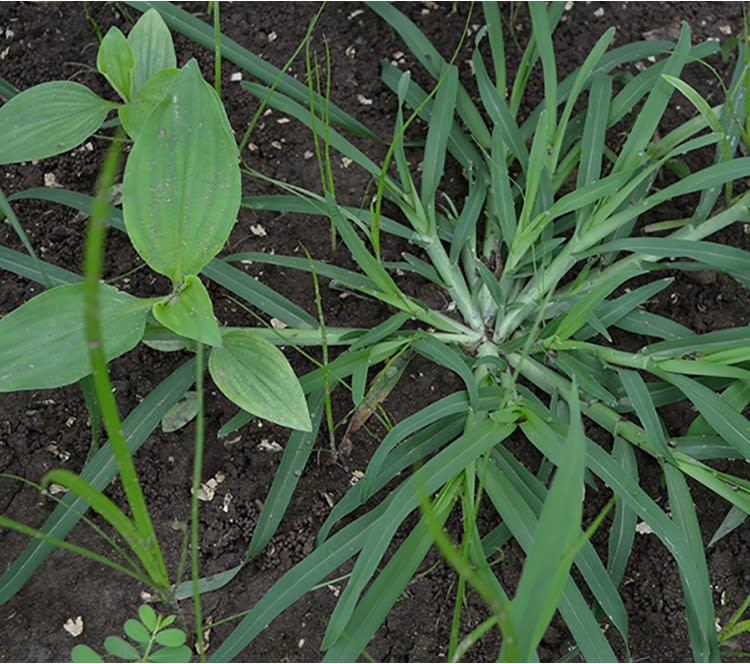

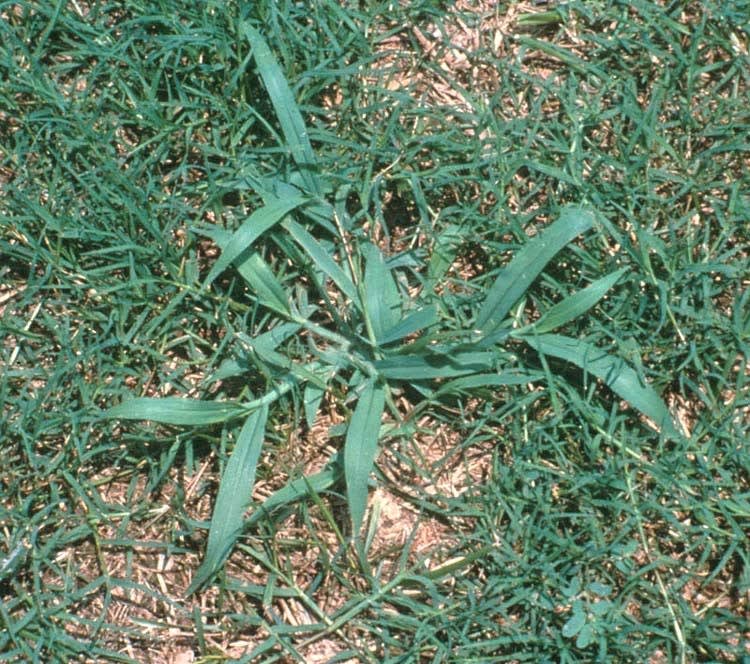
Large Crabgrass and Southern Crabgrass (Scientific Name - Digitaria sanguinalis (L.) Scop. Digitaria ciliaris)
The Large or Southern Crabgrass grows close to the ground (prostrate) or grows upwards in bunches (tufted). It also can spread across the ground and root from the nodes. The leaf the blade is longer than 2 inches and usually hairy on both surfaces, with a visible toothed section at the base of the leaf. The leaf sheath has dense hairs. Spikelets (where the leaves rise and spike out) are like branches (two to nine fingers).
Southern Crabgrass occurs northward on the coastal plain occasionally to Connecticut, more common southward east of the The Appalachian region, through Florida, extends west into Texas and north into Kansas and Nebraska. It also occurs in the West Indies, Mexico, Central America, and South America. Large Crabgrass is found throughout North America, except Florida and the warm temperate regions of the world.
Crabgrass Control
Crabgrass is very opportunistic and will find bare spots and thin sections of your yard.
Start at the beginning during the spring when the soil temperature hits the low 50s for a few days. The soil temperature signals crabgrass seeds to sprout. You can stop that sprouting by applying a pre-emergent herbicide. Pre-emergent herbicides prevent sprouting crabgrass in its tracks. However, pre-emergent herbicides don't kill the existing crabgrass, so using pre-emergent herbicides before the crabgrass begins sprouting is very important. As effective as they are, pre-emergent herbicides won't stop all of the crabgrass all of the time. After the crabgrass seeds have had time to sprout (about 30 to 60 days after your pre-emergent application), it is time to inspect the lawn for crabgrass plants that have managed to sprout and grow. If you find it necessary, apply a post-emergent herbicide that will kill crabgrass.
Treatment With Selective Herbicides
Use herbicides that are specifically designed to kill crabgrass and leave the rest of your lawn unharmed. These are called selective herbicides.
Some selective herbicides may harm certain types of lawn grasses. Be sure to select the herbicide that is safe for your lawn.
Recommended Selective Herbicides
- Q4 Plus
- Drive XLR8
- Quinclorac 75 DF
- Blindside (Can be used on St. Augustine and Centipede)
- Fahrenheit Heribicide (Can be used on St. Augustine and Centipede)
- Carefully read over the label before application.
- If you have properly identified the grass in your lawn you can use our filter options to find products that are safe for you lawn:
- Bahia
- Bent
- Bermuda
- Buffalo
- Centipede
- Fescue
- Kentucky Bluegrass
- Rye
- Seashore Paspalum
- St. Augustine
- Zoysia
Non-Selective Herbicides
- A non-selective herbicide will kill any vegetation that it touches.
- Apply ONLY when your surrounding turf grass is dormant (all green is gone) and spot treat trouble areas.
- Apply when there is a low chance of rain to avoid runoff of chemical to other vegetation.
- Recommended Products: Gly Pho-Sel Pro Dry 75 SG, Eraser Max, and Alligare Glyphosate 5.4
- Spot treat with non-selective herbicides such as Round-Up. We recommend this method if you have a small and easily manageable growth of crabgrass in your lawn.
- When you are spot treating with a non-selective herbicide, be sure to spray when the wind is down and there is no rain because that will limit any drift and run of chemicals to other plants.
- We recommend this treatment method for smaller areas or lawns with small amount of crabgrass.
Key Takeaway
Crabgrass is a winter annual. Its seeds sprout in the late winter/early spring. The crabgrass grows until it is killed by the winter cold.
You can prevent crabgrass by applying a pre-emergent herbicide before the seeds sprout.
Several Post-emergent herbicides will kill or suppress crabgrass. Choose one that is safe for your lawn grass.
Prevent Crabgrass
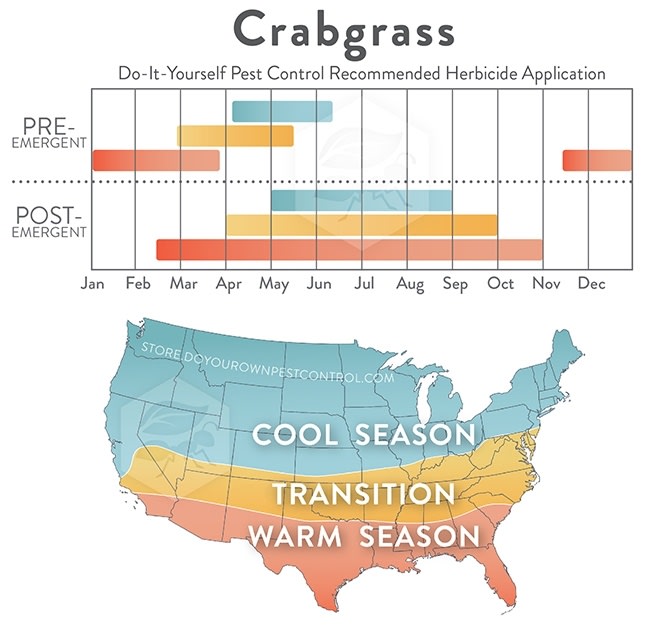

Crabgrass Prevention
- Pre-emergent herbicides are the most common and effective method for eliminating crabgrass before they sprout.
- The key to using these herbicides is timing.
- The best time to apply is when the crabgrass is germinating in the spring but can also be applied in the fall
- Prevent crabgrass by encouraging a dense, thick, and vigorous turf.
Steps for a dense, thick, and vigorous turf.
- Cut your grass tall. 21⁄2 to 4 inches depending on the variety.
- Cut it often enough that you never have to remove more than 1/3 of the grass blade.
- Water the lawn deeply but infrequently. This practice encourages deep root growth and helps the turf withstand droughts.
- Always water in the morning. You don't like going to bed with wet feet, and neither does your lawn.
- Fertilize on a schedule recommended by your county's Cooperative Extension Service. They will have information specific to your area and grass type.




